Peers around the world: lessons in growth and internationalisation at KRP
/Untitled_(Blog_Banner).png)
In this month’s edition of our Peers Around the World series, where we hear from leaders in innovation from across our global network, we caught up with Shigekata Mizuno, Executive Advisor of Kyoto Research Park (KRP) and member of IASP’s Board of Directors.
His involvement with the park goes back to the very beginning of its operations, and position as former managing director and now executive advisor of KRP has provided him with a unique perspective on its evolution which only time and experience can provide. As a member of our Board, he has unique insights into how global collaboration impacts the success of areas of innovation around the world, and his role as a lecturer at Ritsumeikan University has made him keenly positioned to impart knowledge both for his students and for our community.
Read on as we delve into KRP, Kyoto, and what keeps a leader like Shigekata Mizuno motivated over an impactful career spanning decades.
You’ve been involved with Kyoto Research Park (KRP) since its inception – what are some of the biggest transformative steps the park has taken since you started there?
Kyoto Research Park was envisioned in 1989 as a redevelopment of the former city gas plant site of Osaka Gas. As a staff member of Osaka Gas, I was involved in drawing up the initial development plan and business plan, as well as in attracting public support organisations and tenant companies. Initially, the aim was to concentrate research and development-oriented companies and form a centre of interaction through industry-academia-government collaboration, but the focus gradually shifted to creating new businesses.
Around 2015, in response to the growing interest in the field of regenerative medicine following the Nobel Prize awarded to Professor Yamanaka of Kyoto University, a platform was established for manufacturing companies to learn about regenerative medicine and for companies and researchers to exchange knowledge. Through this platform, these companies have developed media for culturing cells and devices for cutting cells for regenerative medicine research.
In this way, the KRP district had been transformed from just a concentration of companies to an innovation hub that provides support for the creation of new businesses and new industries from Kyoto.
KRP is known for being home to some of the most innovative companies in the region. How does KRP support emerging industries such as AI, biotech, and clean energy and how do these industries impact the strategic direction of the park?
Although KRP is not a park specialising in any particular industry sector, but rather in all advanced technology fields, recently its efforts to support start-ups in healthcare and life sciences have had a significant impact. HVC KYOTO (Healthcare Venture Conference KYOTO), organised by JETRO, Kyoto Prefecture, Kyoto City and KRP, is an innovation platform that combines domestic and foreign start-ups with innovative technologies in the healthcare area, with business companies and venture capitalists active in open innovation. The HVC provides start-ups with contact opportunities that contribute to partner collaboration and growth.
Demo Day is Japan's largest English-language business pitch for start-ups specialising in the healthcare sector, as well as matching start-ups with partners who search for business alliances, joint research and investment opportunities, and celebrates its 10th year this year. The HVC has received high acclaim both inside and outside Japan, including a third prize in the Inspiring Solution Award at the 2023 IASP World Conference, as well as the Minister of Economy, Trade and Industry's Award at this year's Japan Open Innovation Awards.
In your role as Executive Adviser at KRP, you have led many of the initiatives which have been crucial to its success, including startup support, academia-industry collaboration, international cooperation and collaboration with local governments. Of these initiatives, which has been the most rewarding collaboration and why?
As Executive Advisor of KRP, I have been promoting KRP's international cooperation and public cooperation. When I first took on this task, I thought of overseas collaboration with the IASP and other overseas organisations separately from public collaboration with local authorities in Kyoto, but one day I realised that it would be better to link the two activities together. Kyoto was assigned to one of the Start-up Ecosystem Cities by the national government to create and support start-ups and have started to work together with local authorities, universities, companies, financial and support institutions, etc.
In order for start-ups to grow, they need to venture out of the Japanese domestic market only and expand overseas. Therefore, I have been conscious that KRP should act as a ‘window’ between the Kyoto ecosystem and the ecosystems of science parks overseas and supports Japanese start-ups in expanding overseas and attracting overseas start-ups to Japan through collaboration between the respective ecosystems. Of course, this is not an easy task, but I believe it is very important in order to increase the value of the science and technology parks.
One of the most impressive examples of this was conducting a smart city experiment with Kyoto Prefecture, IT companies and start-ups in the KRP area a few years ago, using the KRP area as a single city block. I submitted the results in a paper to the IASP's 2022 World Conference in Seville, which was accepted, and I was able to present it on a panel. I think that led to my recommendation to the Board of Directors of the IASP, and I was able to introduce the regional demonstrations to the international participants and show local initiative to global.
Kyoto is home to a vibrant student community and numerous esteemed universities, including Ritsumeikan University Business School, where you teach entrepreneurship. What has this role as lecturer and teacher to the next generation of leaders in these emerging industries taught you about what it takes to start a new venture where the path isn’t laid out for you?
Previously, I’d had very little experience in teaching things to students, but when I was asked to teach at Ritsumeikan University Business School five years ago, I decided to try as this would be a great challenge for me. The course is on entrepreneurship (now, new business development), and in addition to the start-up ecosystem and open innovation that I have experienced at KRP, I give a lecture on creating a business plan. On the last day of the course, the students are asked to present their plans and the whole class questions each other.
When I first took charge of the class, I was surprised to find that the majority of the students were from overseas, especially from China. While the Japanese students wanted to be employed by companies, they were thinking of starting their own business or taking over their family business, and I felt that a positive attitude towards business was important. One of the students is actually preparing to set up an AI company after graduation, and I have been informed that they are considering KRP as a potential location for their business, so I hope to be able to support him.
Speaking of Kyoto, the city has such a long and storied history, renowned for its ancient temples, traditional craftsmanship, and deep cultural heritage. At the same time, Kyoto Research Park represents the city's forward-looking commitment to innovation and cutting-edge research in many emerging fields. From your perspective, how do you see the intersection of Kyoto’s rich past and its high-tech future reflected within the Park?
When considering the redevelopment of the site, the concept of a research park was arrived at by taking into account three characteristics of Kyoto. One is that Kyoto is a historical city with more than 1,200 years of history, and the cutting-edge technologies of its time have been handed down as traditional crafts and historical heritage, but at the same time Kyoto is a manufacturing city where international high-tech companies have grown significantly from start-ups. For example, semiconductors and ceramic capacitors have been created from pottery technology, integrated circuit manufacturing technology from kimono printing technology, biopharmaceuticals from sake brewing, and video games from playing cards.
Kyoto is also a city of universities, including Kyoto University, which has produced many Nobel Prize winners, and 10% of Kyoto's population of 1.45 million people are students and university faculty members. Public testing and research institutes that support manufacturing are located in KRP. In particular, ‘’Kyoto Municipal Institute of Industrial Technology and Culture” is a symbolic link between the traditional and advanced industry, providing technical support and human resource development, such as pottery, lacquer, sake brewing and textiles, as well as developing new technologies and businesses through joint research and contract research with universities and companies.
And KRP is located on the site of an aristocratic residence dating back 1200 years, so when visiting the KRP, I welcome you to visit the exhibition pavilion to see the artefacts and reconstructed housing models.
You recently visited us at our Malaga headquarters for the IASP International Board of Directors meeting and received a visit from Malaga TechPark earlier this year — however this isn't your only connection to your IASP peers globally, as you've had ongoing collaborations with other members of the network. How do your experiences with international collaboration shape your perspective on global partnerships, and what impact have they had on your work at KRP?
KRP is currently the only IASP member from Japan. Although many science parks have been established in Japan as a result of national and local government policies, most of them are positioned as regional industrial promotion centres and are not designed with overseas collaboration in mind. Nevertheless, there are science parks and innovation districts in Japan with ambitious activities, and I would like to encourage their participation in the IASP.
In order not to be a ‘frog in a well’, I have found that it is essential to understand international standards and build a network with other countries by interacting with international cooperation organisations such as the IASP and overseas parks and learning about various knowledge and initiatives.
As it will become increasingly important to produce internationally competitive start-ups and support them to expand overseas, I would like to convey the importance of international collaboration not only within KRP, but also to the Kyoto ecosystem and other regional stakeholders, and disseminate knowledge so that more institutions collaborate with overseas partners as much as possible.
.png)
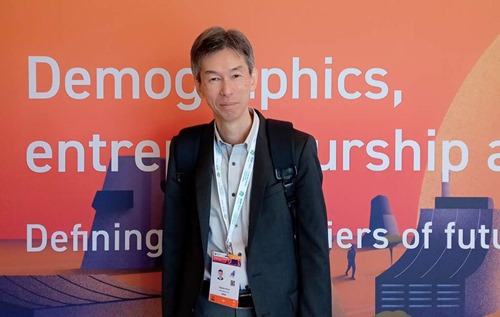
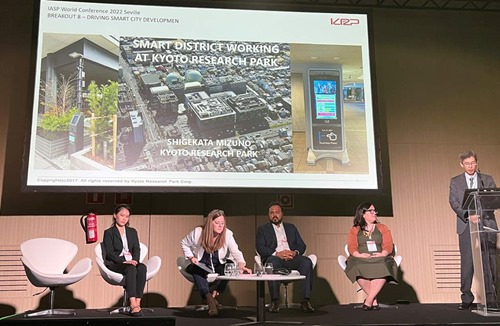

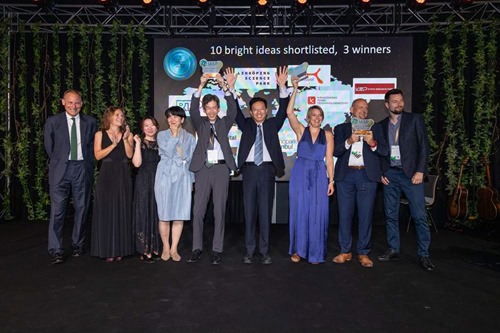
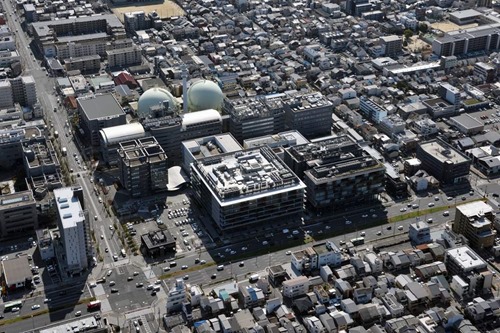

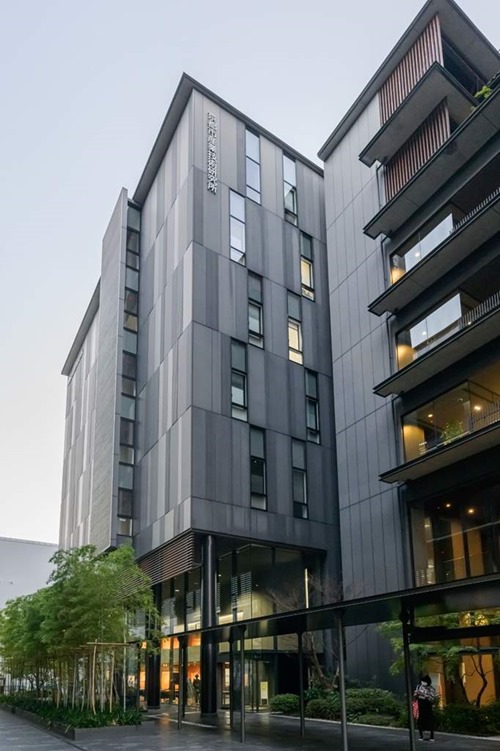
/)

/canvascolor(0xffffffff)/2023_10_09_Brazil_PCT_UNICAMP.jpg)
/canvascolor(0xffffffff)/MemberLogo-56301-60901.jpg)
/canvascolor(0xffffffff)/Logo_ruta_n_4.PNG)
/canvascolor(0xffffffff)/MemberLogo-54401-232601.jpg)
/canvascolor(0xffffffff)/QU_LOGO.png)
/canvascolor(0xffffffff)/2018_03_30_Canada_Technoparc_Montreal.png)
/canvascolor(0xffffffff)/tartu-science-park_eng_land_rgb.jpg)
/canvascolor(0xffffffff)/healthcampus_logo_notext_transparant_7.png)
/canvascolor(0xffffffff)/STH-Tech_logo_USUEL_RGB_NOIR_vsF_avril_21_1.png)
/canvascolor(0xffffffff)/ResearchPark_S_RGB_1.jpg)
/canvascolor(0xffffffff)/MemberLogo-5658-6090.jpg)
/canvascolor(0xffffffff)/acronimo_nombre3l_6.jpg)
/canvascolor(0xffffffff)/MemberLogo-5779-6245.jpg)
/canvascolor(0xffffffff)/2025_02_18_China_Nanjing_Gulou_Hi-Tech_Industrial_Devt_Zone.png)
/canvascolor(0xffffffff)/2018_01_24_Italy_Kilometro_Rosso.png)
/canvascolor(0xffffffff)/2020_05_07_Brazil_Porto_Digital.jpg)
/canvascolor(0xffffffff)/MemberLogo-43501-149701.jpg)
/canvascolor(0xffffffff)/logo-oscuro-parque-cientifico-ua.png.png)
/canvascolor(0xffffffff)/2017_07_31_PITA.jpg)
/canvascolor(0xffffffff)/stepc_logo.png)
/canvascolor(0xffffffff)/LSP_Logo_vertikal_blau_sRGB.jpg)
/canvascolor(0xffffffff)/2024_04_04_The_Netherlands_Lindholmen_Science_Park.jpg)
/canvascolor(0xffffffff)/2017_10_23_Iran_Manzadaran_STP.png)
/canvascolor(0xffffffff)/2017_10_25_Mexico_PIIT_Monterrey.png)
/canvascolor(0xffffffff)/WhatsApp_Image_2023-08-01_at_14.01.59_5.jpg)
